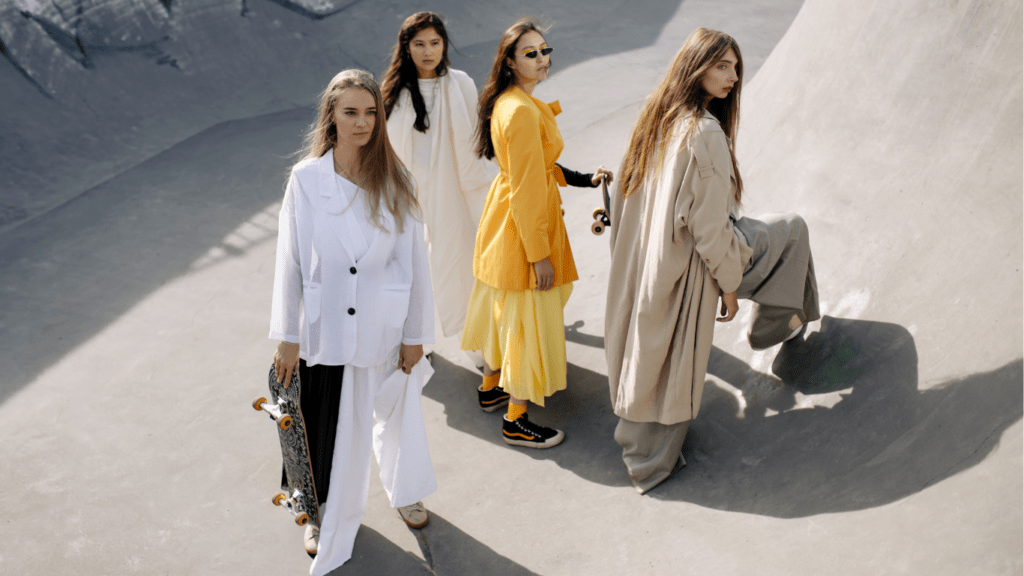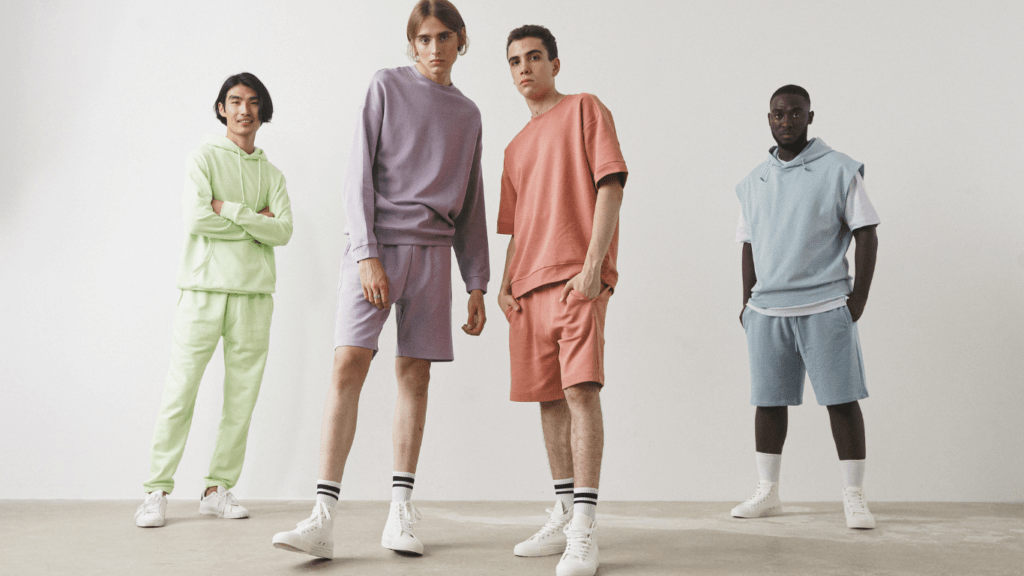Understanding Street Style
Street style impacts high-end fashion through its ever-evolving and dynamic nature.
Definition And Origins
Street style refers to fashion that emerges from grassroots street culture rather than traditional fashion contexts. It originates from urban areas, where diverse communities express themselves through unique clothing combinations. Key movements like hip-hop in the 1980s and skate culture in the 1990s greatly influenced the development of street style. Tokyo’s Harajuku district is one notable example of a place where street fashion flourished, blending various global influences into a distinct, eclectic look.
Key Elements Of Street Style
Street style incorporates individualistic and versatile pieces:
- Oversized Hoodies: Common among young people and rappers, offering both comfort and style.
- Graphic Tees: Featuring logos, artwork, or slogans, showing personal expression.
- Sneakers: Often limited-edition releases, sneakers serve as status symbols in urban fashion.
- Distressed Denim: Adds a rugged, casual look, popular in skate and punk subcultures.
- Accessories: Items like caps, beanies, and layered jewelry add layers of personality to outfits.
Key elements like these make street style flexible and influential.
The Influence Of Urban Fashion On High-End Collections
Urban fashion significantly impacts high-end collections, setting trends that luxury designers eagerly adopt.
Notable Designers Inspired By Street Style
Several notable designers draw heavy inspiration from street style.
- Virgil Abloh, the founder of Off-White, famously merges urban aesthetics with high fashion, often using elements like industrial belts and graphic tees.
- Demna Gvasalia, the creative director of Balenciaga, incorporates oversized hoodies and deconstructed silhouettes reminiscent of skate culture.
- Riccardo Tisci at Burberry reintroduces classic streetwear pieces such as bomber jackets and sneakers, blending them with British heritage elements.
Iconic High-End Collections Influenced By Street Trends
Numerous high-end collections showcase the influence of street trends. Louis Vuitton’s menswear collection by Virgil Abloh features extensive streetwear elements, including oversized outerwear and vibrant graphic patterns. Gucci’s collaboration with Dapper Dan brings Harlem street style to the luxury forefront, with bold logos and flashy accessories. Dior’s partnership with Nike on the Air Jordan 1 sneaker exemplifies the fusion of street and luxury, making high-end sneakers a significant part of runway shows.
The Evolution Of Street Style In High Fashion

Street style’s influence on high fashion reflects a dynamic fusion of urban culture and luxury design.
Historical Timeline
Street style began shaping high fashion in the late 20th century. During the 1980s, hip-hop culture introduced oversized hoodies, gold chains, and sneakers, which soon caught the attention of designers. By the 1990s, skate culture added baggy jeans, graphic tees, and beanies to the mix. Designers like Marc Jacobs started incorporating grunge elements into their collections, blending streetwear aesthetics with high fashion.
The 2000s saw the rise of designers like Alexander McQueen and Jean-Paul Gaultier, who drew inspiration from punk culture, incorporating leather jackets and distressed denim into their haute couture. The meteoric rise of streetwear brands like Supreme and A Bathing Ape further blurred the lines between street style and high fashion, leading to collaborations with luxury brands.
Recent Trends In The Fusion
In the past decade, the fusion of street style and high fashion has become more pronounced. Designers like Virgil Abloh of Off-White and Demna Gvasalia of Balenciaga have popularized the use of oversized silhouettes and bold graphics in luxury collections. Brands like Louis Vuitton and Gucci regularly feature streetwear-inspired pieces, including sneakers and graphic tees, in their runway shows.
Collaborations between streetwear and high fashion have become common. Louis Vuitton’s partnership with Supreme in 2017 marked a significant milestone, bringing streetwear directly to the luxury market. High-end sneakers, exemplified by Dior’s Air Jordan 1, have become status symbols, merging athletic wear with luxury branding. This ongoing blend highlights the industry’s shift towards more accessible, diverse, and culturally rich fashion aesthetics.
The Role Of Social Media
Social media platforms play a crucial role in how street style influences high-end fashion collections.
Influencers And Their Impact
Influencers, especially on platforms like Instagram and TikTok, bridge the gap between street style and high fashion. When influencers post about emerging trends, they amplify streetwear elements to a broad audience, making them appealing and accessible. Influencers like Aimee Song and Chiara Ferragni showcase and curate urban fashion, often leading to direct adaptations by luxury brands. These influencers collaborate with designers, bringing authenticity and unique urban flair into high-end collections.
Street Style Virality And High Fashion Integration
Street style often goes viral through shares, likes, and comments, making trends widespread quickly. Platforms like Pinterest and Twitter contribute to the rapid spread of urban fashion trends. When users engage with street style content, they indirectly influence high fashion designers who monitor these platforms for inspiration. Gucci’s viral GG logo on hoodies and sneakers exemplifies this trend. Viral street style looks create feedback loops where designers incorporate these viral elements into their collections, enhancing the ongoing blend of street and luxury fashion.
Challenges And Controversies
Blending street style with high fashion creates several challenges and controversies that impact the industry.
Cultural Appropriation Concerns
Urban fashion often has deep roots in specific communities and cultural movements. When high-end designers incorporate these elements without proper acknowledgment, it raises issues of cultural appropriation. For example, elements like traditional African patterns or Native American motifs can be seen in luxury collections without credit to their origins. This misappropriation can disrespect the source cultures and dilute the authenticity of the designs.
Balancing Authenticity And Commercialism
Maintaining street style’s authenticity while commercializing it in high fashion is a delicate balance. Authentic streetwear originates from grassroots movements with a focus on individuality and self-expression. When luxury brands adopt these styles, there’s a risk of losing their original spirit. For example, oversized hoodies and graphic tees may become mass-produced items that lack the unique essence of their street origins. This commercialization can sometimes alienate the subcultures that created the styles, leading to tension between maintaining authenticity and achieving market profitability.





